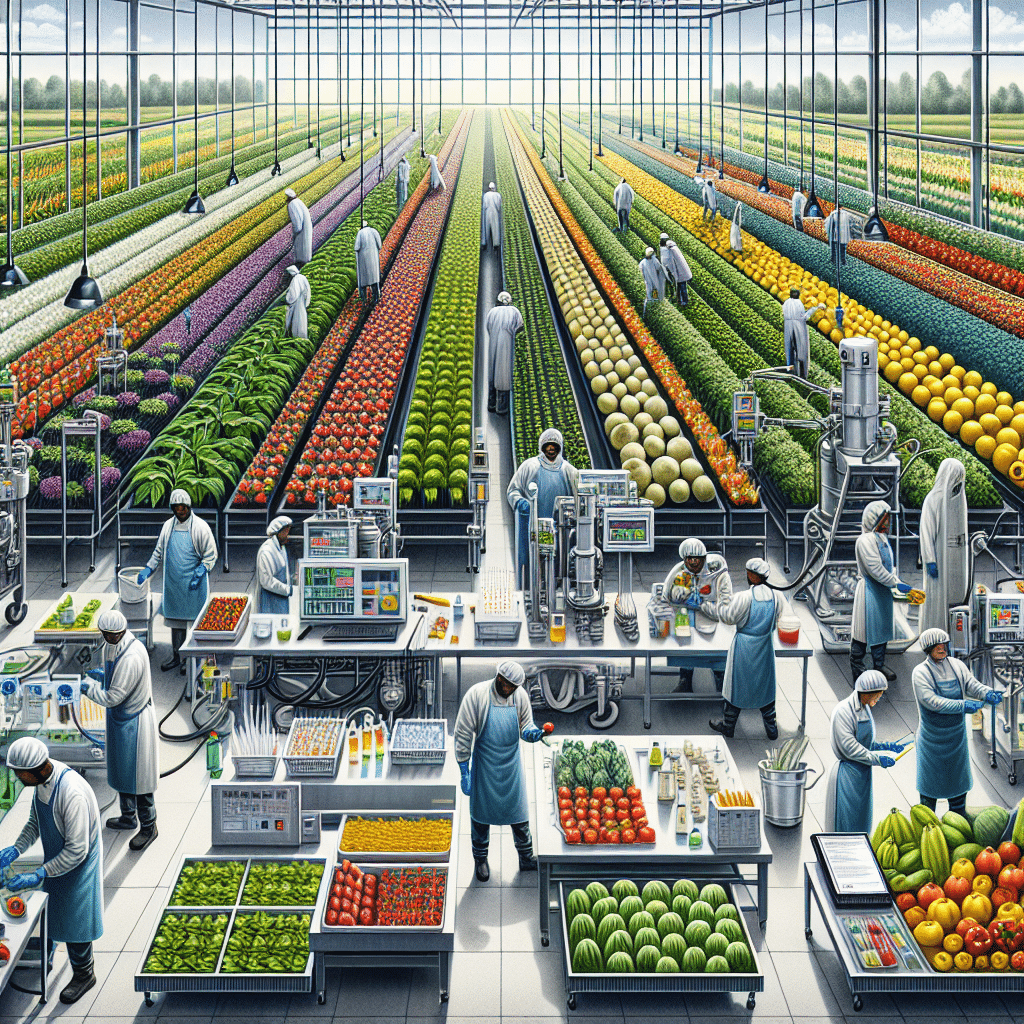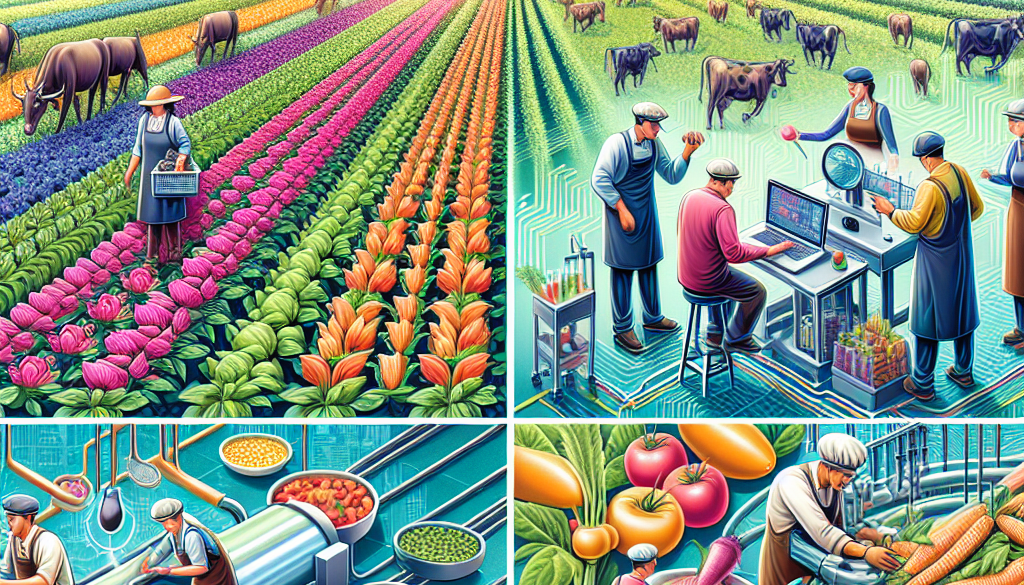Food Safety in the Produce Industry: Application of novel technologies to enhance food safety programs from grower to processor
-
Table of Contents
- Enhancing Food Safety in the Produce Industry with Novel Technologies
- The Importance of Food Safety in Produce
- Technological Innovations from Grower to Processor
- On the Farm: Precision Agriculture and Monitoring
- During Harvest: Automation and Traceability
- At the Processing Facility: Advanced Detection and Sanitation
- Case Studies: Success Stories in Food Safety Enhancement
- Challenges and Considerations
- Conclusion: The Future of Food Safety in Produce
- ETprotein: Enhancing Nutrition with High-Quality Protein Products
Enhancing Food Safety in the Produce Industry with Novel Technologies

The produce industry is a critical component of global food systems, providing essential nutrients to diets worldwide. However, ensuring the safety of fruits and vegetables from farm to fork is a complex challenge that requires constant vigilance and innovation. With the rise of foodborne illnesses linked to produce, the industry is turning to novel technologies to bolster food safety programs at every stage of the supply chain. This article explores how cutting-edge solutions are being applied from growers to processors to safeguard our fresh produce.
The Importance of Food Safety in Produce
Food safety is paramount in the produce industry due to the high risk of contamination that can occur at multiple points during the cultivation, harvesting, processing, and distribution of fruits and vegetables. Pathogens such as E. coli, Salmonella, and Listeria can cause severe illness and even death, making it essential to minimize risks. According to the Centers for Disease Control and Prevention (CDC), produce accounts for nearly half of all foodborne illnesses in the United States, underscoring the need for effective safety measures.
Technological Innovations from Grower to Processor
Advancements in technology are revolutionizing the way the produce industry approaches food safety. From the fields where crops are grown to the facilities where they are processed, innovative solutions are being implemented to detect, prevent, and control potential hazards.
On the Farm: Precision Agriculture and Monitoring
- Remote Sensing: Drones and satellites equipped with remote sensing technology can monitor crop health and identify areas at risk of contamination, allowing for targeted interventions.
- Soil and Water Testing: Advanced testing methods for soil and water help farmers detect the presence of harmful pathogens and take corrective actions to prevent crop contamination.
- Biological Controls: The use of beneficial microorganisms and natural predators can reduce the reliance on chemical pesticides, thereby lowering the risk of chemical contamination.
During Harvest: Automation and Traceability
- Automated Harvesting Equipment: Machines designed to minimize damage to produce can reduce the risk of pathogen entry through cuts and bruises on fruits and vegetables.
- Blockchain Technology: Implementing blockchain for traceability ensures that each step of the produce’s journey is recorded, making it easier to track and recall contaminated products.
At the Processing Facility: Advanced Detection and Sanitation
- Hyperspectral Imaging: This technology can detect contaminants on the surface of produce that are invisible to the naked eye, ensuring only safe products move forward in the supply chain.
- Smart Sanitation Systems: Automated cleaning systems with sensors can ensure that processing equipment is sanitized effectively, reducing the risk of cross-contamination.
Case Studies: Success Stories in Food Safety Enhancement
Several produce companies have successfully integrated novel technologies into their food safety programs. For instance, a large berry producer implemented a blockchain-based traceability system that reduced the time to track a batch of berries from 7 days to 2.2 seconds. Another example is a leafy greens processor that uses hyperspectral imaging to detect foreign materials, improving product safety and reducing waste.
Challenges and Considerations
While the potential of these technologies is immense, there are challenges to their widespread adoption. The cost of implementation can be prohibitive for small-scale farmers, and there may be a learning curve associated with new systems. Additionally, ensuring data privacy and security is crucial when adopting digital solutions like blockchain.
Conclusion: The Future of Food Safety in Produce
The application of novel technologies in the produce industry represents a significant step forward in enhancing food safety. By leveraging tools like remote sensing, blockchain, and hyperspectral imaging, the industry can better prevent, detect, and respond to food safety issues. As these technologies become more accessible and cost-effective, we can expect to see a transformation in how produce is grown, harvested, and processed, leading to safer food for consumers around the world.
ETprotein: Enhancing Nutrition with High-Quality Protein Products
In addition to food safety, nutrition is a key consideration in the produce industry. ETprotein offers a range of high-quality protein products that can complement the nutritional value of fruits and vegetables. Their organic and non-GMO protein powders, including rice, pea, and various seed proteins, are ideal for fortifying juices, smoothies, and other produce-based products. With a commitment to safety and quality, ETprotein’s offerings can help processors deliver not only safe but also nutritious food options to health-conscious consumers.
About ETprotein:
ETprotein, a reputable protein and L-(+)-Ergothioneine (EGT) Chinese factory manufacturer and supplier, is renowned for producing, stocking, exporting, and delivering the highest quality organic bulk vegan proteins and L-(+)-Ergothioneine. They include Organic rice protein, clear rice protein, pea protein, clear pea protein, watermelon seed protein, pumpkin seed protein, sunflower seed protein, mung bean protein, peanut protein, and L-(+)-Ergothioneine EGT Pharmaceutical grade, L-(+)-Ergothioneine EGT food grade, L-(+)-Ergothioneine EGT cosmetic grade, L-(+)-Ergothioneine EGT reference grade and L-(+)-Ergothioneine EGT standard. Their offerings, characterized by a neutral taste, non-GMO, allergen-free attributes, with L-(+)-Ergothioneine purity over 98%, 99%, cater to a diverse range of industries. They serve nutraceutical, pharmaceutical, cosmeceutical, veterinary, as well as food and beverage finished product distributors, traders, and manufacturers across Europe, USA, Canada, Australia, Thailand, Japan, Korea, Brazil, and Chile, among others.
ETprotein specialization includes exporting and delivering tailor-made protein powder and finished nutritional supplements. Their extensive product range covers sectors like Food and Beverage, Sports Nutrition, Weight Management, Dietary Supplements, Health and Wellness Products, and Infant Formula, ensuring comprehensive solutions to meet all your protein needs.
As a trusted company by leading global food and beverage brands and Fortune 500 companies, ETprotein reinforces China’s reputation in the global arena. For more information or to sample their products, please contact them and email sales(at)ETprotein.com today.














